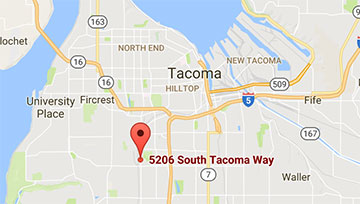
By zach rynders, pt, dpt
We believe most people know physical activity and regular exercise can help improve health and reduce risk of disease. This is no secret. However, many people do not have a thorough understanding of exactly how, and to what degree, regular physical activity can impact health and wellness. Furthermore, there is often a lack of focus on how exercise impacts aging adults. The goal of this article is to shed some light on physical activity and aging, showing you the vast benefits you may be missing if you choose a sedentary lifestyle.
Over the last twenty years a multitude of epidemiological studies and reviews have established the benefit of physical activity in improving life expectancy with and without disease, and improving quality of life in the aging adult. Aging is a complex phenomenon involving multiple biological pathways at the cellular level. The aging process is accelerated by inactivity, poor nutrition, and smoking among other things. Accelerated aging diminishes healthy life expectancy. In contrast, physical activity works at the cellular level to slow down the aging process and improve healthy life expectancy.
epidemiological evidence
How do we know physical activity effects health and life expectancy? Multiple large-scale studies indicate higher levels of physical activity are associated with reduced overall mortality as well as death from cardiovascular disease or cancer. This effect is almost as powerful as the benefit of avoiding smoking! This relationship between physical activity and mortality has been found across various age distributions and in various geographical areas.
Furthermore, a high level of sedentary behavior, independent of physical activity, is linked to premature mortality. In other words, if you have some level of physical activity in your life AND spend a lot of time sitting around, watching TV, staring at screens, etc. your life expectancy decreases. This suggests a dose-dependent relationship for physical activity and increased life expectancy. While simply walking daily is certainly beneficial, it may not be enough to offset the negative effects of spending the majority of your day sedentary.
There is also a reduction of acute events such as myocardial infarction (heart attack) observed with higher levels of physical activity. A higher level of physical fitness prior to an acute event can improve recovery after an event and prevent a secondary event.
Physiology of Physical activity
So what physiological effect does physical activity actually have? In order to fully understand how physical activity combats the effects of aging, we need to look at the effects aging has the body.
Physical activity works at the cellular level to slow down the aging process and improve healthy life expectancy.
1. vascular effects
First, let’s look at vascular effects. That is, how do blood vessels change as we age? Age-related oxidative stress promotes inflammation in endothelial cells and decreased nitric oxide availability. (Oxidative stress is defined as an imbalance in cells and tissues between free radicals and antioxidants that detoxify these reactive products. This imbalance grows with aging.) Endothelial cells line all blood vessels. Inflammation in endothelial cells leads to increased stiffness of large arteries, increased arterial wall thickness, and peripheral vasoconstriction. This all results in increased peripheral vascular resistance and increases blood pressure.
So what does this mean in plain English?
- Blood vessel walls thicken, slowing the exchange of nutrients and wastes.
- Arteries, including the main artery from the heart (aorta) become thicker and stiffer, increasing blood pressure and making the heart work harder.
2. Cardiac effects
We should also talk about the cardiac effects aging has. What happens to the heart as we age? Aging leads to myocyte enlargement and fibrosis of collagen in the heart. A slight increase in the size of the heart, especially the left ventricle, occurs in some people. As the heart wall thickens the amount of blood the chamber can hold may decrease and fill slower. The valves inside the heart that control the blood low thicken and become stiffer. All of this makes the heart work harder.
3. Blood Effects
The blood itself changes slightly with aging. As total body water reduces with aging, blood volume decreases. Red blood cell production speed is reduced in response to stress or illness. This means there is a slower response to blood loss and anemia. Some white blood cells decrease in number and ability to fight off bacteria, reducing the ability to resist infection.
4. muscle effects
Muscle strength and muscle mass play a significant role in the ability to function on a daily basis. By mid-50’s muscle loss (sarcopenia) accelerates to about 10% of muscle mass reduction per decade. The loss of muscle tissue is accompanied by an increase in fat tissue.
effects of exercise
So all these changes occur with aging, but what can we do about it? Well, exercise training and regular physical activity can help slow these processes.
1. vascular effects
Exercise training decreases aorta stiffness and increases aorta compliance. When we exercise it induces pulsatile continuous blood flow which signals endothelial cell survival and activates endothelial nitric oxide synthase. Cells in bone marrow that help generate endothelial cells are also mobilized via exercise. Additionally, exercise increases muscle capillary density. In other words, exercise prevents arteries from thickening and promotes exchange of blood. This reduces the workload placed on the heart and cardiovascular system.
2. cardiac effects
Exercise promotes antioxidant protection in the heart muscle. It protects against ischemic damage and prevents cellular death in the heart. This can help prevent thickening of the heart and prevents ventricular dysfunction. Regular exercise helps the heart maintain its ability to fill and pump blood, reducing the amount it has to work.
Multiple large-scale studies indicate higher levels of physical activity are associated with reduced overall mortality as well as death from cardiovascular disease or cancer.
3. other physiological benefits
Physical activity also leads to some other immediate physiological effects, such as improved blood glucose management and improved sleep. The longer-term benefits include muscle strength, cardiovascular endurance, flexibility, balance, and velocity of movement, which helps reduce frailty. Think improved ability to catch yourself if you trip!
4. psychological benefits
Immediate psychological benefits include reduced stress and anxiety, relaxation, and enhanced mood state. Long-term effects are improved cognitive ability, motor control, and skill acquisition. These benefits may allow you to continue hobbies you enjoy, such as golf, tennis, and arts & crafts.
All of these improvements can lead to gaining a sense of control over what you do and increased involvement in social and cultural activities.
how much exercise and what kind?
The best general recommendation is to accumulate at least 30 minutes or more of moderate-intensity physical activity on most, if not all, days of the week. For structured exercise programs, research indicates best results from 3-5 times per week, 30-45 minutes, at a level vigorous enough to raise your heart rate to 70-80% of max heart rate.
Resistance training helps build muscle strength, can build muscle mass in aging adults (yes, even at the age of 80 and older you can build muscle mass), and also improves aerobic capacity. In other words, resistance training can improve cardiovascular health! Therefore, we recommend a combination of resistance training and aerobic exercise.
Conclusion
OK, so that was a lot of big words and maybe created some “so what?” from you. What does it all mean?
To summarize:
- Physical activity has an anti-aging effect
- Physical activity helps prevent premature mortality
- Physical activity improves quality of life across the life span
- Regular exercise reduces the occurrence of acute events such as heart attack and stroke
- Exercise improves the body’s ability to fight off infection and prevent disease
- Physical activity improves physical, psychological, and social health
The work you do now will help you live the life you want now and in the future. Show up, work hard, move better, and live better.





